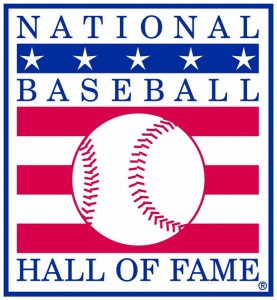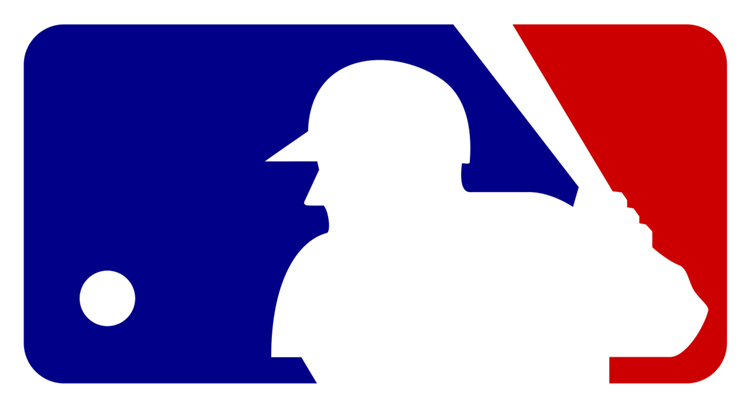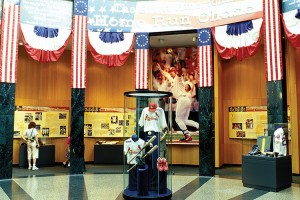MLB Stars Join Hall of Fame
Wednesday, August 1st, 2018August 1, 2018
On Sunday, July 29, Major League Baseball (MLB) greats Vladimir Guerrero, Trevor Hoffman, Chipper Jones, and Jim Thome were inducted into the National Baseball Hall of Fame in Cooperstown, New York. Jones, a slugging third baseman, was elected in his first year of eligibility during voting in January. Voters named him on 97 percent of the ballots, putting him well above the 75 percent required for election. Guerrero, a dynamic, free-swinging power hitter, earned 93 percent of the vote on his second try. Thome’s long home run-hitting career earned him a first-year entry into the Hall of Fame with 90 percent of the vote. Hoffman, one of the game’s greatest relief pitchers, got 80 percent of the vote on his third go around. Former pitcher Jack Morris and shortstop Alan Trammell, elected in December 2017 by the Modern Baseball Era Committee, were also included in this year’s Hall of Fame class. Joining the players were broadcaster Bob Costas and sportswriter Sheldon Ocker.

The National Baseball Hall of Fame is in Cooperstown, New York. Credit: © National Baseball Hall Of Fame
Some 53,000 people packed the grass field outside the Hall of Fame’s Clark Sports Center, where a ceremony initiates the exclusive club’s newest members each year. On stage with the newcomers were 57 members elected in previous years and decades. Florida-born Chipper Jones was the first to take the stage. A switch-hitting third baseman, Jones played 19 seasons for the Atlanta Braves from 1993 to 2012 (he missed the 1994 season because of injury). He became a full-time player in 1995, helping the Braves win a World Series title. Jones was the 1999 National League (NL) Most Valuable Player (MVP), hitting .319 with 45 home runs and 110 runs batted in (RBI’s) for the NL champion Braves. He made eight NL All-Star teams, including his last two seasons at age 39 and 40. Jones had a career batting average of .303. He collected 2,726 hits, 468 of which were homers, and drove in 1,623 runs.
Californian Alan Trammell followed Jones. Trammell and fellow inductee Jack Morris both starred for the Detroit Tigers, a team they led to a 1984 World Series title. Trammell spent all 20 of his MLB seasons in Detroit, where he racked up 2,365 hits, 185 homers, and 1,231 runs scored between 1977 and 1996. A great all-around player, the six-time All-Star won four gold gloves as the AL’s best fielding shortstop, and three silver sluggers as the league’s best hitting shortstop.

The famous Major League Baseball (MLB) logo was designed by graphic designer Jerry Dior in 1968. Credit: © Major League Baseball
Vladimir Guerrero, a native of the Dominican Republic, hit third in the Hall of Fame lineup on Sunday. Guerrero was known for his unorthodox hitting style and a batter’s eye that saw nearly every pitch as a good one. Guerrero came up with the Montreal Expos at the end of the 1996 season, and he soon blossomed into a star. In seven full seasons with the Expos, he showed off a powerful arm in right field while averaging 33 home runs and 100 RBI’s at the plate. In 2004, his first year with the Anaheim Angels, Guerrero hit .337 with 39 homers and 126 RBI’s to earn American League (AL) MVP honors. He later played briefly for the Texas Rangers and Baltimore Orioles. Guerrero made nine All-Star teams during his career, which ended after the 2011 season. For his career, Guerrero hit .318 with 449 home runs, 1,496 RBI’s, and 2,590 hits.
Californian change-up specialist Trevor Hoffman came next. Hoffman frustrated enough batters during his career to be the first MLB reliever to save 500, and then 600 games. Hoffman came up with the Florida Marlins in 1993 and was dealt that year to the San Diego Padres. Hoffman became a star closer in San Diego, where he averaged 41 saves per season from 1995 through 2008 (excluding 2003, a season almost entirely lost to injury). He made seven All-Star teams over his career, his last coming at age 41 with the Milwaukee Brewers in 2009. Hoffman retired after the 2010 season with 601 career saves and a lifetime earned run average of 2.87. His mastery at changing speeds earned him a career strikeout percentage of 9.4 per 9 innings.
Minnesota’s Jack Morris, a starting pitcher, followed the closer Hoffman. Morris made five All-Star teams and won 254 games between 1977 and 1994. Known as a consistent winner and perhaps the toughest postseason pitcher of his era, Morris played most of his career in Detroit before wrapping up his career with stints in Minnesota, Toronto, and Cleveland.

Jim Thome ranks among the leading home run hitters in Major League Baseball history. He was enshrined in the National Baseball Hall of Fame on July 29, 2018. Credit: © AP Photo
A son of Peoria, Illinois, Jim Thome delivered a grateful and heartfelt speech after Morris. Thome had a “cup of coffee” (a brief stint) with the Cleveland Indians at the end of the 1991 season. After a couple seasons trying to establish himself, Thome became the Indians’ full-time third baseman in 1995 as the team reached the World Series. Thome, a burly, powerful slugger, became known for his colossal home runs—as well as his gentle and kind demeanor. A former teammate said Thome was nice “to everything except the baseball.” Switching to first base in 1997, Thome hit 40 dingers as the Indians made their second World Series appearance in three years. Thome later had productive seasons with the Philadelphia Phillies and Chicago White Sox before rounding out his career as a “hired bat” with several teams. A five-time All-Star, Thome retired after the 2012 season with 612 career homers and 1,699 RBI’s, as well as 1,747 walks—a tribute to his power, as pitchers avoided his spot in the lineup.
Bob Costas, who has covered baseball nationally since 1982 (as well as numerous other sports and the Olympic Games), joined the Hall of Fame as the 2018 winner of the Ford C. Frick Award for broadcasters. Sheldon Ocker, a beat writer for the Indians for 33 seasons, earned entry as the 2018 winner of the J.G. Taylor Spink Award “for meritorious contributions to baseball writing.”
Hall of Fame voting is based upon a player’s record, playing ability, integrity, sportsmanship, character, and contributions to the team(s) on which the player played. Votes are cast by members of the Baseball Writers’ Association of America, which consists of writers with 10 consecutive years of service in the association. To be eligible, ballplayers must have spent at least 10 seasons in the majors and been retired for 5 years (exceptions are made in the case of severe injury or sudden death, such as with Roberto Clemente). Eligible players remain on the Hall of Fame ballot for 10 years, after which they can gain entry only though one of the select Eras Committees (formerly the Veterans Committee)—a rare occurrence. The Eras Committees, made up of former executives, managers, players, and umpires, also choose nonplayers such as Costas and Ocker for entry into the Hall of Fame.



